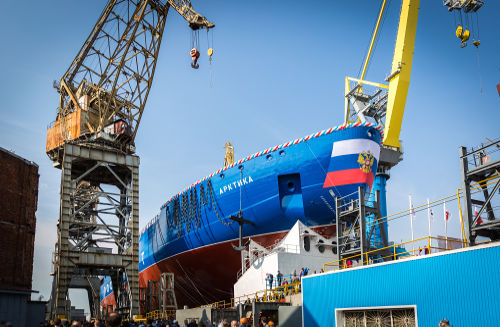
16 June, an eagerly anticipated ceremony of launching the world’s most powerful Arktika icebreaker (Project 22220) took place at Baltic Shipyard. According to Sergei Kirienko, General Director ROSATOM, the Arktika will be put into service of ROSATOMFLOT (atomic fleet operator) by the end of the next year (2017).
The ceremony was attended by the Chairperson of the Federation Council of the Federal Assembly of the Russian Federation Valentina Matvienko, General Director of ROSATOM Sergei Kirienko, Governor of Murmansk region Marina Kovtun, Vice Governor of St. Petersburg Sergei Movchan, Member of the Federation Council of the Federal Assembly of the Russian Federation & President of the Polar Academy Artur Chilingarov, President of the United Shipbuilding Corporation (USC) Akeksei Rakhmanov, General Director of Baltic Shipyard (Shipbuilding) Aleksei Kadilov and other VIPs. Valentina Matvienko noted in her speech that a qualitatively new level would be attained in development of the wealthiest region and wished fair seas and following winds to the great Arktika.
With her keel laid down at the Blatic shipyard in 2013, the Arktika icebreaker was designed for
Apart from CDB Iceberg and TSNII SET, many other units of the Krylov State Research Centre have also been involved in the development of this
